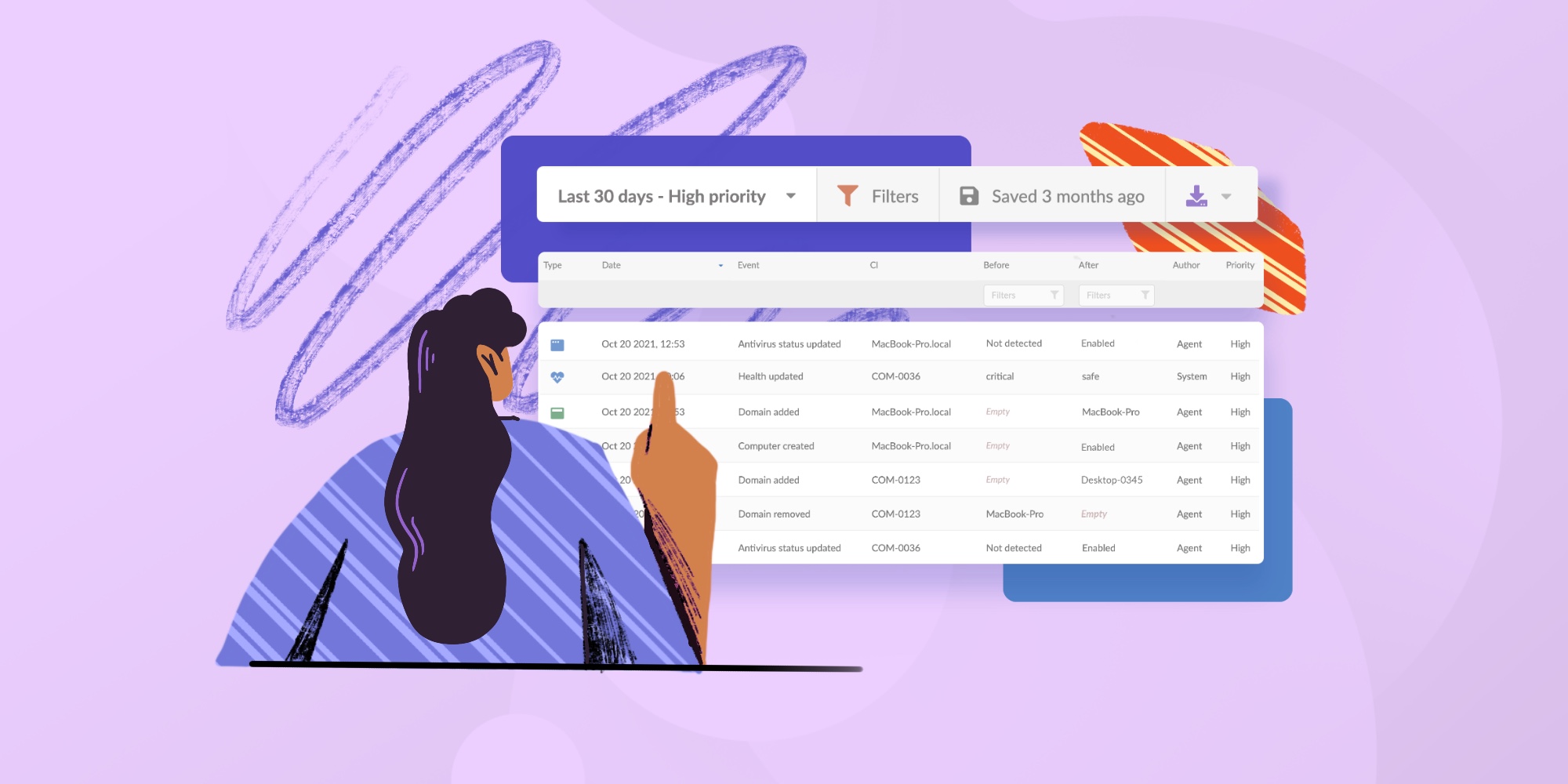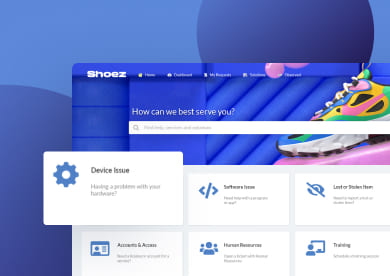IT Asset Management (ITAM) is shifting from basic record-keeping to a strategic discipline that supports cost optimization, security, and sustainability.
In 2026, ITAM trends center on AI and automation, unified management of hybrid and multi-cloud environments (including SaaS), and using asset data to meet stricter security and Environmental, Social, and Governance (ESG) regulations and directives like NIS2 ( Network and Information Security) and CSRD (Corporate Sustainability Reporting Directive).
As a result, ITAM is becoming the single source of truth for all technology assets, and IT teams are expected to deliver data-driven insights, not just inventory. This article explores 9 key ITAM trends for 2026 and how to turn them into a practical roadmap for your organization.
Why ITAM trends matter so much in 2026
ITAM is becoming increasingly critical due to economic pressure, rising cyber risks, and complex hybrid environments.
While organizations understand its importance, most still struggle with visibility, especially across cloud and SaaS, where confidence drops significantly compared to on-prem assets. This visibility gap limits cost optimization, increases audit exposure, and weakens security.
As IT estates expand to include multi-cloud, SaaS, remote/BYOD, and IoT/OT, ITAM must serve as the unified source of truth. Collaboration between ITAM, CloudOps, and FinOps is growing as organizations seek better cost control and risk reduction.
At the same time, regulatory frameworks like NIS2 and CSRD are making accurate asset inventories and lifecycle data a compliance obligation, not just a best practice.
With ITAM now seated at the crossroads of cost, security, and sustainability, global investment in the discipline continues to rise. The following 9 trends outline how IT Asset Management will evolve and where teams should focus in 2026.
9 IT Asset Management trends to watch in 2026
Before diving in, note that these trends are interconnected. Improvements in visibility and data quality underpin automation and Risk Management gains; better governance supports both security and sustainability objectives.
You don’t need to tackle all these trends at once – the key is to prioritize the ones that align with your organization’s goals and pain points.
#1. From inventory to intelligence: Closing the ITAM visibility gap
ITAM is evolving from simple asset tracking to becoming a trusted intelligence layer for decision-making. But many organizations still struggle with fragmented discovery data, inconsistent records, and unreliable SaaS visibility, which leads to wasted spend, hidden security risks, and gaps in ESG reporting.
The priority for 2026 is to build clean, reconciled, and normalized asset data so ITAM can act as a true single source of truth. This means consolidating discovery sources, assigning data ownership, and tracking KPIs such as coverage and data freshness. Once visibility is reliable, ITAM can finally support strategic goals like cost optimization, proactive Risk Management, and regulatory reporting.
#2. Managing hybrid IT, SaaS sprawl, and multi-cloud together
ITAM is no longer limited to managing on-prem hardware and software. By 2026, teams must track and govern assets across hybrid environments that include data centers, public clouds, containers, and an expanding SaaS footprint. This shift creates major visibility and cost challenges, especially as SaaS purchasing becomes decentralized and multi-cloud adoption turns into the norm.
Because cloud and SaaS consumption is dynamic and usage-based, ITAM now overlaps with CloudOps and FinOps. Extending discovery to cloud and SaaS, feeding inventory and renewal data into Procurement and FinOps workflows, and maintaining a unified asset repository helps reduce waste, prevent audit exposure, and support smarter budgeting in increasingly cloud-centric environments.

#3. AI-augmented ITAM: automation, prediction, and AI-native workflows
AI is rapidly moving from hype to practical, built-in capabilities that enhance ITAM speed, accuracy, and decision-making. By 2026, ITAM platforms will increasingly automate data cleanup, detect anomalies, and update inventories in real time, while predictive models help forecast renewals, failures, and asset lifecycle events. This shifts ITAM from reactive record-keeping to proactive insight generation, allowing teams to anticipate risks and optimize spend before issues arise.
To enable AI-augmented workflows, organizations must focus first on clean, integrated asset data and start with clear, high-value use cases such as SaaS license predictions or NLP-based asset queries. AI isn’t a replacement for ITAM professionals, but a force multiplier that handles repetitive analysis and surfaces insights, giving teams more time for strategic work. The future of ITAM will be built on a synergy between automation, analytics, and human judgment.
“AI is creating a lot of fear in different companies and positions. Leaders are incorporating it with the idea of replacing people, and that creates a very negative impact.”
Ariel Gesto, CEO and co-founder of InvGate
4. ITAM as a security and compliance control (NIS2, DORA, CSRD, and beyond)
By 2026, ITAM is becoming a core security and compliance control, providing the visibility needed to identify exposed assets, enforce segmentation policies, and rapidly isolate compromised devices. Organizations are integrating ITAM more tightly with Security teams and tooling to avoid blind spots that lead to unpatched systems, shadow IT, or delayed incident response.
Regulations like NIS2, DORA, and CSRD are accelerating this shift by requiring reliable and up-to-date asset inventories. As a result, ITAM is expanding from financial governance to cyber resilience, audit readiness, and operational Risk Management.
If you’re curious about how these regulatory shifts translate into real-world practices, we dedicated a full Ticket Volume episode to unpacking what NIS2 means for IT teams in 2026. You can explore practical steps, expert insights, and common pitfalls in our deep dive on NIS2 implementation.
5. ESG, circular IT, and CSRD-driven lifecycle management
Sustainability requirements like CSRD are pushing organizations to track how IT assets are used, reused, and disposed of. This is accelerating the move toward circular IT, where extending device lifespans, refurbishing equipment, and ensuring responsible recycling become part of ITAM’s core responsibilities.
In 2026, ITAM teams will be expected to provide lifecycle and disposal data for ESG reporting, partner with ITAD vendors, and adopt policies that reduce e-waste and improve resource efficiency. ITAM’s role expands from cost control to enabling sustainability goals with measurable, audit-ready data.
6. Extending ITAM beyond IT: IoT, OT, and Enterprise Service Management
In 2026, ITAM expands beyond traditional IT assets to include IoT, OT, and department-owned equipment, as organizations look for a unified way to track and maintain everything connected to the network. As factories, hospitals, offices, and retail environments adopt more smart devices, ITAM becomes essential for inventory, maintenance, and security across IT and non-IT domains.
At the same time, ITAM practices are being shared through Enterprise Service Management, with teams like Facilities, HR, and Finance using asset workflows for maintenance, onboarding, depreciation, or equipment tracking. Extending ITAM beyond IT improves visibility, reduces lost or unmanaged assets, and creates consistent lifecycle processes across the business.
7. Experience-centric ITAM: supporting employees and digital workplaces
In 2026, ITAM plays a key role in employee experience by ensuring people have the right devices and software for their roles and minimizing disruptions caused by hardware issues or delays. As organizations shift toward experience-level agreements (XLAs), ITAM contributes by right-sizing equipment, enabling quick provisioning, and proactively addressing device health to reduce downtime.
A strong ITAM practice also supports hybrid work, self-service hardware requests, and coordinated onboarding and offboarding. By combining lifecycle data with digital experience insights, ITAM helps ensure technology “just works,” improving satisfaction and productivity across the modern workplace.
8. Self-service and low-code workflows for asset management
In 2026, ITAM teams increasingly rely on self-service portals and low-code automation to handle routine asset tasks at scale. Employees can request hardware or software, confirm assigned devices, or initiate simple updates directly through guided self-service flows, reducing bottlenecks and speeding up fulfillment without adding workload to ITAM staff.
Low-code tools also allow teams to build or adjust asset workflows—such as onboarding, approvals, or disposals—without heavy development effort. With proper governance and permissions, these automations keep data accurate, streamline processes across departments, and free ITAM teams to focus on higher-value work instead of repetitive provisioning tasks.

9. Convergence of ITAM, security, and Risk Management
Security and ITAM are becoming inseparable. As attack surfaces grow and hybrid environments get more complex, organizations can no longer protect what they cannot see. In 2026, real-time, trustworthy asset data becomes a security requirement rather than an operational nice-to-have. ITAM provides the visibility security teams need to spot unmanaged devices, track software vulnerabilities, and understand ownership and criticality for faster risk decisions.
The result is a practical convergence: ITAM increasingly feeds Vulnerability Management, SIEM, EDR, and GRC platforms with context like lifecycle stage, warranty status, configuration, and usage patterns. This enables better prioritization, automated remediation workflows, and clearer accountability. Instead of static inventories and reactive patching, organizations move toward proactive risk reduction, where asset intelligence helps close exposure faster and strengthens overall security posture.
How to turn 2026 ITAM trends into a practical roadmap
You don’t need a big-bang ITAM transformation. Start by prioritizing 2–3 trends that match your risk and business context, then build a simple roadmap around them. The goal is not perfection, but steady, visible progress in how you manage, govern, and use asset data across the organization.
1. Assess your current ITAM maturity and visibility
Begin with an honest baseline. Review your current data sources (tools, spreadsheets, contracts), processes, and ownership for hardware, software, cloud, and SaaS. Use internal audits and simple metrics such as inventory coverage (discovered vs expected assets), data freshness (how recently records were updated), and number of discrepancies between Configuration Management Database (CMDB), procurement, and reality.
Even a basic 1–5 maturity score for key areas like Hardware Asset Management (HAM) and Software Asset Management (SAM) will help you see where you are and where the biggest gaps lie.
2. Map ITAM data flows into Security, FinOps, and ESG
Next, identify who depends on ITAM data and for what. Talk to Security, Finance/FinOps, Procurement, and Sustainability to understand which asset metrics they actually need: vulnerable assets for Security, usage vs entitlement for FinOps, lifecycle and disposal data for ESG, and so on.
From there, define minimum viable integrations, for example ITAM ↔ IT Service Management (ITSM), ITAM ↔ SIEM or Vulnerability Management, and ITAM ↔ ESG reporting tools, so that critical data flows automatically instead of being moved by ad hoc exports and spreadsheets.
3. Prioritize 2–3 high-impact initiatives
Based on your assessment and data-flow mapping, choose a small number of focus areas rather than trying to do everything at once. If overspend and audit risk are your main pain points, prioritize software license optimization and audit readiness.
If cloud costs and SaaS sprawl are the issue, focus on hybrid IT visibility and FinOps integration. Define clear, measurable goals for each initiative, such as "achieve 90% hardware inventory accuracy in 6 months” or “reduce unused SaaS spend by 15% by Q3."
4. Strengthen governance and process ownership
Whatever trends you choose, they will stall without clear governance. Establish or refresh your ITAM policy, define who owns the inventory and who approves changes, and document lifecycle processes for acquire, deploy, change, and retire.
Embed ITAM steps into onboarding, offboarding, and change workflows so updates are not optional. Whenever possible, consolidate to a single system of record instead of scattered spreadsheets, and make sure someone is explicitly accountable for keeping it accurate.
5. Use automation and self-service for quick wins
Look for low-effort automations that immediately improve data quality and user experience. Deploy or tune discovery tools to automatically update inventories, and add simple self-service requests (for common hardware or software) in your service portal, backed by ITAM data.
If your tool offers AI or analytics features, pilot something small like identifying unused licenses or obvious anomalies. These quick wins demonstrate the value of modernized ITAM and free your team from repetitive manual work.
6. Track and communicate outcomes
Finally, make the impact of ITAM visible. Track a small set of KPIs — such as cost savings from reclaimed licenses, reduction in unknown assets, improved fulfillment times, or percentage of devices properly disposed of or recycled — and report them regularly to IT, Security, Finance, and Sustainability stakeholders.
Tie improvements to strategic goals (reduced risk, lower spend, better ESG reporting) so ITAM is seen as a contributor to business outcomes, not just an internal administrative function.
How modern ITAM software supports 2026 priorities
The trends shaping ITAM in 2026 make one thing clear: organizations need tools that provide unified visibility, strong data governance, and automation that scales.
Modern ITAM platforms are evolving in that direction, acting less as static inventories and more as engines that support multi-stakeholder operations across security, finance, compliance, and sustainability.
#1: Multi-environment discovery and unified visibility
A modern ITAM solution should offer end-to-end discovery across on-premises infrastructure, cloud workloads, and SaaS applications. This usually means combining agent-based discovery for endpoints with network scans, API connectors, and cloud integrations.
The goal is a single, normalized view of servers, laptops, virtual machines, SaaS licenses, and even emerging categories like IoT or OT assets.

#2: Built-in normalization and multi-stakeholder reporting
To enable data-driven ITAM, platforms should include hardware and software catalogs that automatically clean, classify, and enrich discovered items.
This improves accuracy and supports dashboards tailored to different audiences: risk summaries for security, cost and usage insights for finance, lifecycle and disposal metrics for sustainability teams, and operational views for IT.
#3: Integrations across ITSM, security, finance, and ESG
Given the growing overlap between ITAM and other disciplines, software should integrate natively with service desk tools, endpoint managers, vulnerability scanners, Cloud Cost Management platforms, procurement systems, and ESG or BI solutions.
These integrations ensure that asset data flows into the processes that depend on it, enabling consistent governance and reducing manual reconciliation.
#4: Low-code automation for lifecycle processes
Modern platforms increasingly include drag-and-drop builders or workflow engines that let teams automate provisioning, approvals, updates, and retirement without custom development.
This supports self-service requests, reduces ticket volume, and ensures lifecycle steps happen consistently. Low-code capabilities also make it easier for departments outside IT to adapt processes to their own needs.
InvGate Asset Management as your IT Asset Management tool

If you’re exploring tools that can support these evolving ITAM priorities, InvGate Asset Management® is a strong, modern option designed to help organizations mature at their own pace. The platform is fully no-code, highly scalable, and offers a clear and straightforward pricing structure, making it easy for teams of any size to adopt and grow their ITAM practice without unnecessary complexity.
Our software aligns closely with the trends outlined in this guide. It enables the creation of a unified, centralized inventory across IT and non-IT assets, combining agent-based discovery, network scanning, and integrations to give organizations full visibility of their hybrid estates.
It supports lifecycle tracking, and configurable dashboards support better data quality, experience monitoring, and multi-stakeholder reporting, while low-code automation helps streamline processes such as onboarding, device assignments, software management, and end-of-life workflows.
If you want to explore how InvGate Asset Management can support your roadmap, you can try it free or connect with our team to discuss your requirements.















